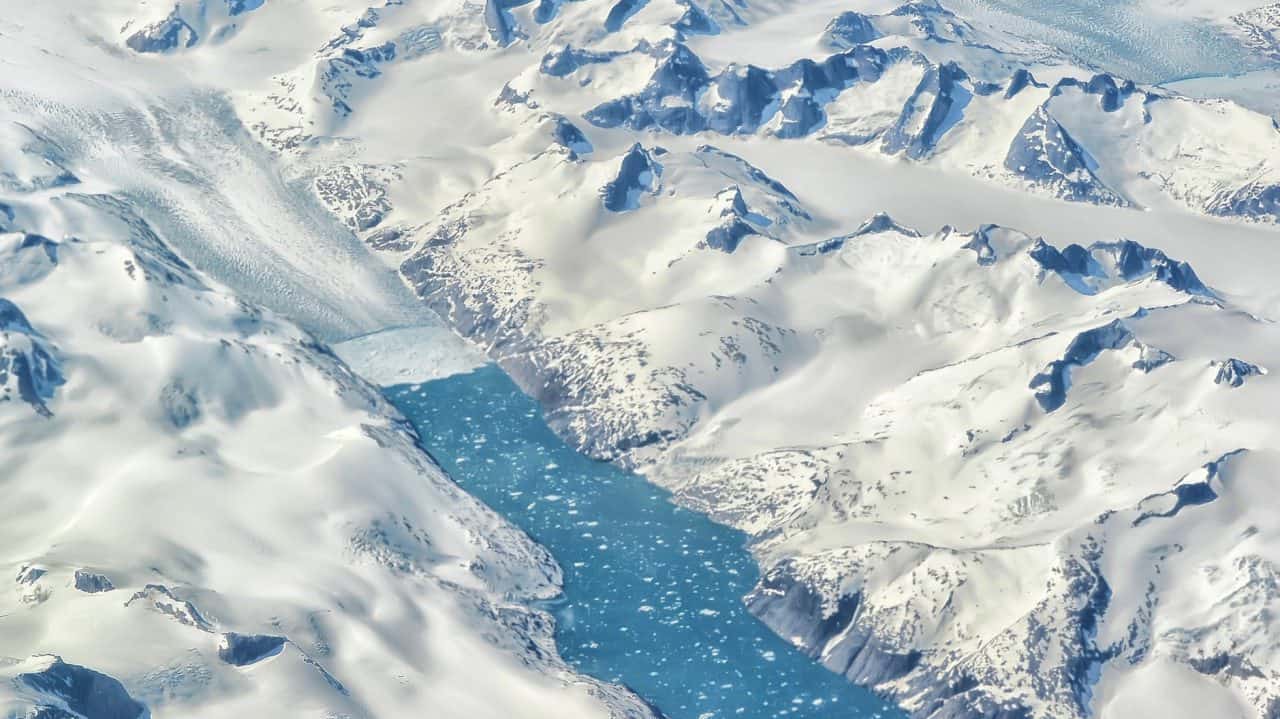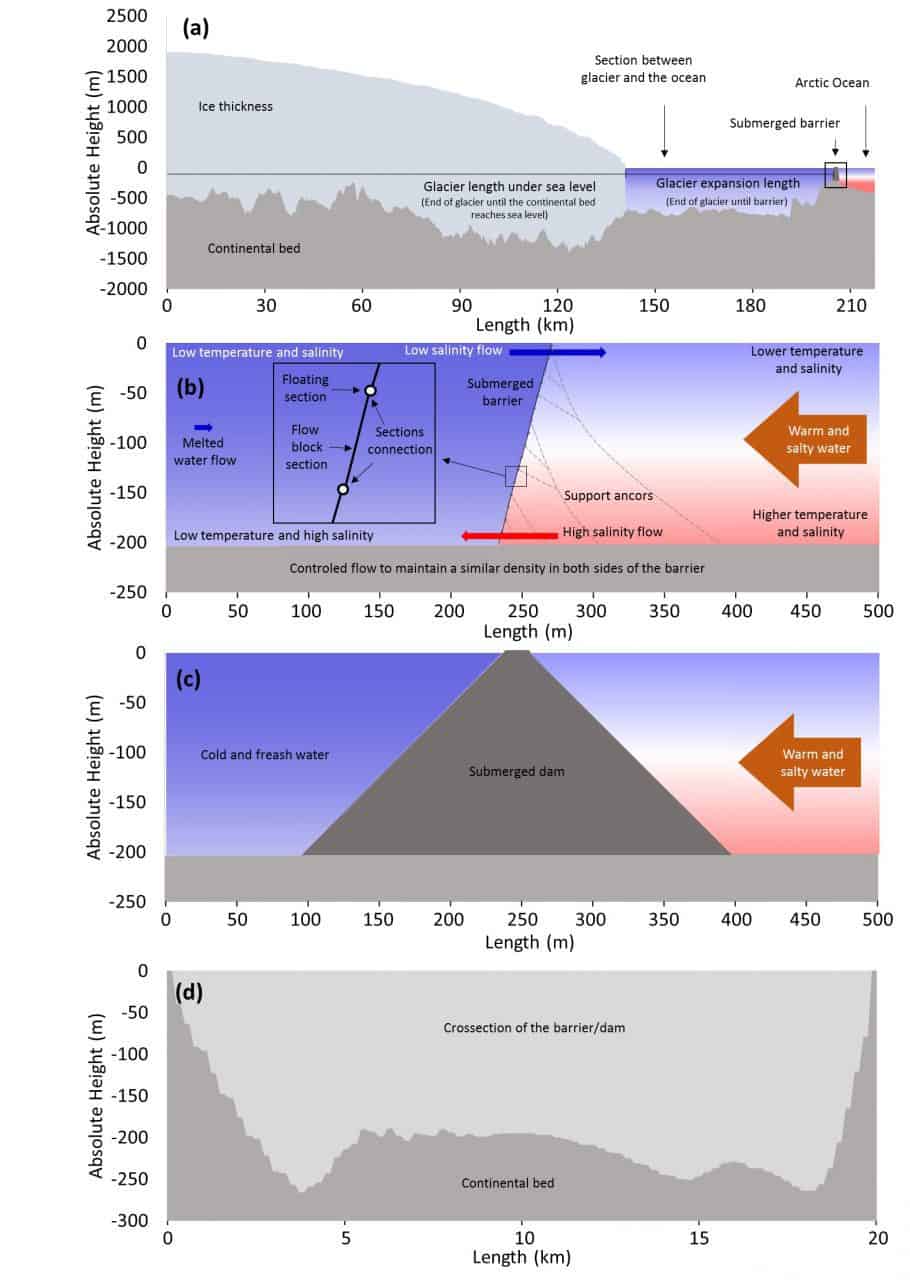By Julian Hunt, IIASA postdoc

Sea level rise is one of the most challenging impacts of climate change. The continued rise in sea levels, partially caused by the melting of the ice sheets of Greenland and Antarctica, will result in large scale impacts in coastal areas as they are submerged by the sea. Locations not able to bear the costs of implementing protection and adaptation measures will have to be abandoned, resulting in social, economic and environmental losses.
The most important mitigation goal for sea level rise is to reduce or possibly revert carbon dioxide (CO2) emissions. Given the time lag between emission reductions and the impacts of climate change, new adaptation measures to reduce sea level rise should be proposed, developed and if possible, implemented.
A proposal that I developed during my D.Phil degree ten years ago, which resulted in a paper on the Mitigation and Adaptation to Global Change Journal1, shows that submerged barriers in front of ice sheets and glaciers would contribute to reducing the ice melt in Greenland. Edward Byers and I propose the construction of ten barriers at key glaciers in Greenland to stop the flow of warm salty ocean water reaching glaciers in Greenland and Atlantic, which are the main contributors to ice melting. This could reduce sea level rise by up to 5.3 meters at a levelized cost of US$275 million a year. The cost of the barriers is only a fraction of the estimated costs of adaptation measures to sea level rise around the world estimated to be US$1.4 trillion a year by 21002.
The barrier consists of several plain sheet modules of marine grade steel around 200 mm thick connected to cylindrical steel tubes with air inside to keep the barrier floating. The depth of the barriers varies from 30 – 500 meters and the required length to stop the sea water from entering the fjords, where the glaciers are located. As no such barrier has been developed before, we propose three main steps for the construction of the barrier:
- The barrier components should be transported to the designated location during the summer, when there is no ocean ice cover and the access to the location of the barrier is less challenging. Also during the summer, mooring structures should be added.
- During the winter, the barrier is assembled over the frozen ice cover.
- During the next summer, the ice cover will melt again and the barrier will float above the place where it is should be fixed. The mooring chains attached to the barrier will pull the barrier into place, using the mooring structures in the ground.
The concept of reducing the contact of seawater and glaciers to reduce ice sheet melting was first published by Moore in Nature3, and Wolovick in The Cryosphere4 with the construction of submerged dams. A graphic representation of the concept is presented in Figure 1. As you can see the barriers should be positioned just after the glacier cavity, where the depth required for the barrier would be the smallest. Our cost analysis shows that using submerged barriers would have one or two orders of magnitude lower costs when compared to submerged dams. Additionally, submerged barriers could be easily removed, if the need arise.

There are several issues involving the implementation of these barriers that should be considered before they are built. The reduction of ice melt in Greenland glaciers will contribute to an increase in seawater temperature and salinity of the Arctic Ocean, which will have a direct impact on the region’s biosphere, climate and ocean currents. The superficial ice cover in the Arctic will be considerably reduced. This would allow a new maritime route for ships to cross the Arctic Ocean, increase the absorption of CO2 by the Arctic Ocean, due to the increase in the ice free surface area and the cold seawater temperature, and the increase in radiation heat from the Arctic Ocean into space. Ice is a strong thermal insulator. Without the Arctic Ocean ice cover the temperature of the region and the heat radiated from the Earth to space will considerably increase, which could have a higher impact in cooling the Earth than the ice cover’s albedo effect. Thus, the reduction of the Arctic Ocean ice cover could contribute to reducing the overall CO2 concentration of the atmosphere and reducing the Earth’s temperature.
This solution, however, should not be used as an excuse to reduce focus on cutting CO2 emission. If the world continues to warm, not even submerged barriers in front of glaciers would be able to stop ice sheets melting and sea level rise.
References:
- Hunt J, Byers E (2018) Reducing sea level rise with submerged barriers and dams in Greenland. Mitigation and Adaptation Strategies for Global Change DOI: 10.1007/s11027-018-9831-y. [pure.iiasa.ac.at/15649]
- Jevrejeva JS, Jackson LP, Grinsted A, Lincke D, and Marzeion B (2018) Flood damage costs under the sea level rise with
warming of 1.5 ◦C and 2 ◦C. Environmental Research Letters DOI: 10.1088/1748-9326/aacc76 - Moore J, Gladstone R, Zwinger T, and Wolovick M (2018) Geoengineer polar glaciers to slow sea-level rise. Nature: https://go.nature.com/2GoPcGp
- Wolovick M, Moore J (2018) Stopping the flood: could we use targeted geoengineering to mitigate sea level rise? The Cryosphere DOI: 10.5194/tc-12-2955-2018

You must be logged in to post a comment.